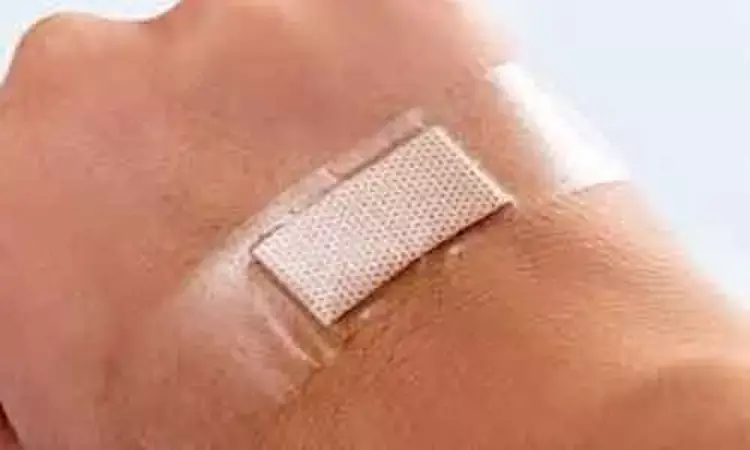- Home
- Medical news & Guidelines
- Anesthesiology
- Cardiology and CTVS
- Critical Care
- Dentistry
- Dermatology
- Diabetes and Endocrinology
- ENT
- Gastroenterology
- Medicine
- Nephrology
- Neurology
- Obstretics-Gynaecology
- Oncology
- Ophthalmology
- Orthopaedics
- Pediatrics-Neonatology
- Psychiatry
- Pulmonology
- Radiology
- Surgery
- Urology
- Laboratory Medicine
- Diet
- Nursing
- Paramedical
- Physiotherapy
- Health news
- Fact Check
- Bone Health Fact Check
- Brain Health Fact Check
- Cancer Related Fact Check
- Child Care Fact Check
- Dental and oral health fact check
- Diabetes and metabolic health fact check
- Diet and Nutrition Fact Check
- Eye and ENT Care Fact Check
- Fitness fact check
- Gut health fact check
- Heart health fact check
- Kidney health fact check
- Medical education fact check
- Men's health fact check
- Respiratory fact check
- Skin and hair care fact check
- Vaccine and Immunization fact check
- Women's health fact check
- AYUSH
- State News
- Andaman and Nicobar Islands
- Andhra Pradesh
- Arunachal Pradesh
- Assam
- Bihar
- Chandigarh
- Chattisgarh
- Dadra and Nagar Haveli
- Daman and Diu
- Delhi
- Goa
- Gujarat
- Haryana
- Himachal Pradesh
- Jammu & Kashmir
- Jharkhand
- Karnataka
- Kerala
- Ladakh
- Lakshadweep
- Madhya Pradesh
- Maharashtra
- Manipur
- Meghalaya
- Mizoram
- Nagaland
- Odisha
- Puducherry
- Punjab
- Rajasthan
- Sikkim
- Tamil Nadu
- Telangana
- Tripura
- Uttar Pradesh
- Uttrakhand
- West Bengal
- Medical Education
- Industry
'Smart bandage' may help solve a major problem when treating chronic wounds

How can doctors make sure a dressed wound is healing without taking off the bandage? This is a conundrum, because removing a bandage can disrupt the healing process. Technology presented in a new study in open-access journal Frontiers in Physics could help.
This new 'smart bandage' contains a sensor that can very sensitively measure wound moisture levels and then transmit the data to a nearby smartphone, without requiring doctors to remove the bandage. In the future, by changing the geometry and materials in the bandage, the researchers may be able to fine tune it to suit different types of wounds. The technology could help doctors to monitor wounds more easily and successfully.
Chronic wounds can be a source of significant suffering and disability for patients who experience them. Getting such wounds to heal is tricky and there are many factors that can affect wound healing, such as temperature, glucose levels, and acidity. However, one of the most important is moisture levels. Too dry, and the tissue can become desiccated; too wet, and it can become white and wrinkly, as it does in the bath. Both these situations disrupt the healing process.
However, if a doctor wants to check the moisture levels of a wound then they need to remove the bandage, potentially damaging the delicate healing tissue. These issues have inspired this latest smart bandage, as a way to monitor wound moisture levels non-invasively. The choice of materials was a challenge, as bandages need to be biocompatible, disposable and inexpensive.
How it works
To achieve this, the researchers applied a conductive polymer called poly(3,4-ethylenedioxythiophene):polystyrene sulfonate (PEDOT:PSS) onto a gauze using a technique called screen printing, and then incorporated the gauze with commercially available bandage materials. The idea is that changes in the moisture level of the wound cause a change in an electrical signal measured by the sensor.
"PEDOT:PSS is an organic semiconducting polymer that can be easily deposited on several substrates as a standard ink," explained Dr Marta Tessarolo of the University of Bologna, an author on the study. "We also incorporated a cheap, disposable and bandage-compatible RFID tag, similar to those used for clothing security tags, into the textile patch. The tag can wirelessly communicate moisture level data with a smartphone, allowing healthcare staff to know when a bandage needs to be changed."
To test their bandages, the researchers exposed them to artificial wound exudate, which is the liquid that seeps from wounds, and also tested different bandage materials and shapes. They found that the bandage was highly sensitive, providing drastically different readings between dry, moist and saturated conditions, suggesting it could be a valuable tool in wound management.
"We developed a range of bandages with various layers and different absorption properties and characteristics," said Dr Luca Possanzini, another author from the University of Bologna. "The idea is that each type of wound could have its own appropriate dressing, from slowly exuding wounds to highly exuding wounds, such as burns and blisters. However, we will need to further optimize the sensor geometry and determine the appropriate sensor values for optimal healing before we can apply our technology to various types of wounds
https://www.frontiersin.org/articles/10.3389/fphy.2021.722173/full
Hina Zahid Joined Medical Dialogue in 2017 with a passion to work as a Reporter. She coordinates with various national and international journals and association and covers all the stories related to Medical guidelines, Medical Journals, rare medical surgeries as well as all the updates in the medical field. Email: editorial@medicaldialogues.in. Contact no. 011-43720751
Dr Kamal Kant Kohli-MBBS, DTCD- a chest specialist with more than 30 years of practice and a flair for writing clinical articles, Dr Kamal Kant Kohli joined Medical Dialogues as a Chief Editor of Medical News. Besides writing articles, as an editor, he proofreads and verifies all the medical content published on Medical Dialogues including those coming from journals, studies,medical conferences,guidelines etc. Email: drkohli@medicaldialogues.in. Contact no. 011-43720751


